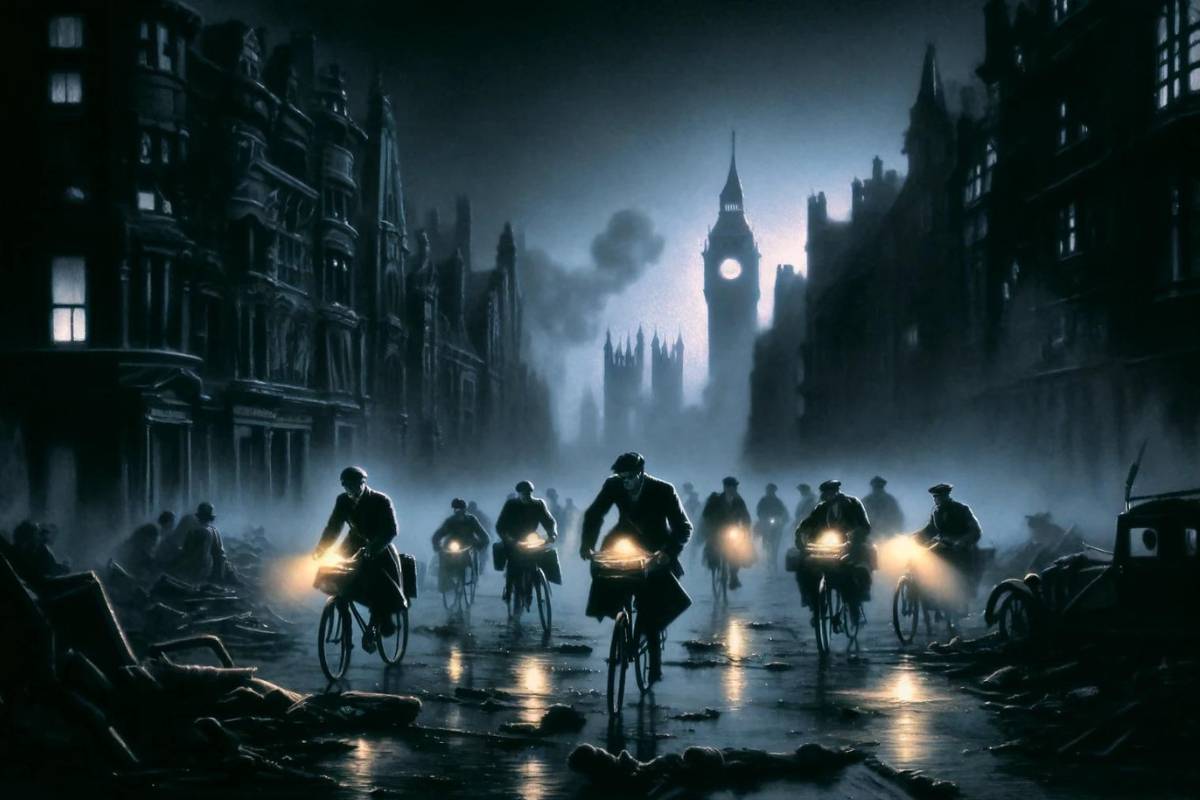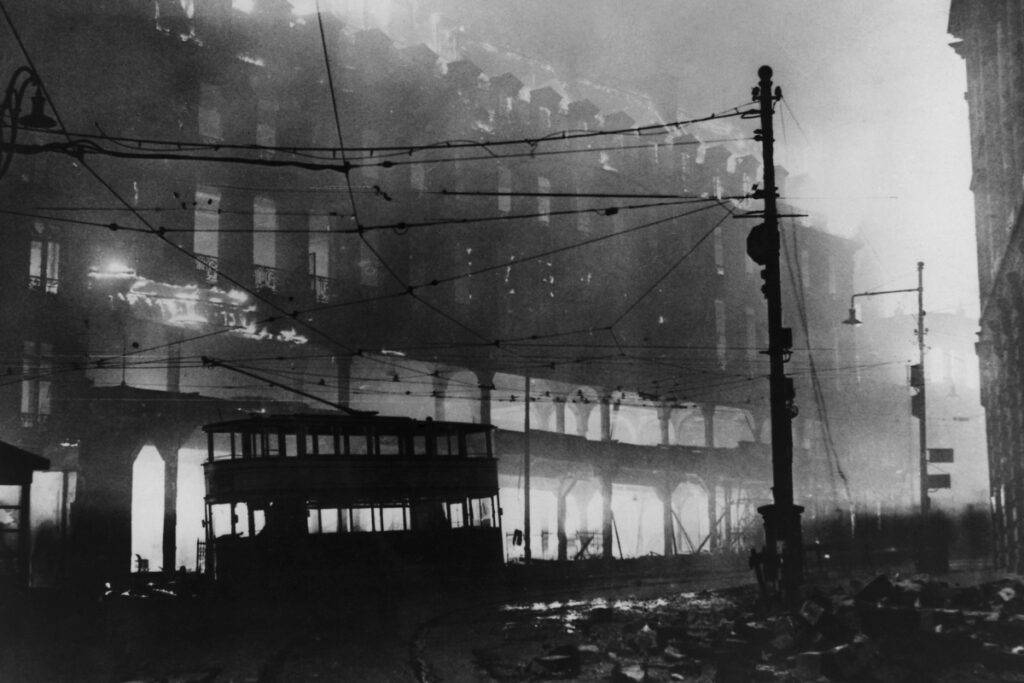
The humble bicycle played a significant and important role during one of the darkest periods in British history.
The London Blitz was a major chapter in the history of World War II, characterized by the sustained bombing campaign carried out by Nazi Germany against Britain.
The term “Blitz” comes from the German word “Blitzkrieg,” meaning “lightning war,” and it aptly describes the intense, rapid bombings that took place.
The Reason Behind the Blitz
The Blitz began on September 7, 1940, and continued until May 11, 1941.
During this period, London was bombed for 56 out of the first 57 days and nights.
The attacks then spread to other major British cities, including Coventry, Birmingham, Liverpool, and Manchester, among others.
The bombings typically occurred at night and were initially focused on London’s docklands, an important industrial and military area.
As the Blitz continued, the bombing became more widespread and indiscriminate.
The primary objective of the Blitz was to demoralize the British public and government and to disrupt and destroy the United Kingdom’s logistics and production capabilities.
By targeting civilian areas, industrial sites, and infrastructure, the Luftwaffe (the aerial warfare branch of the German military) hoped to force Britain to surrender or at least weaken its ability to fight.

The Use of Bicycles During the Blitz
The prolonged bombing by Nazi Germany, devastated much of the city’s infrastructure, creating widespread chaos with bomb craters and debris littering the streets.
Amidst this destruction, transportation and communication networks were severely disrupted.
This is when bicycles became a vital mode of transportation in London for several reasons.
With fuel rationing in place, many Londoners who previously relied on cars or public transportation turned to bicycles for essential travel.
Bicycles were perfect for navigating bomb-damaged streets and debris-filled roads.
Their agility allowed riders to navigate around craters and blocked pathways more easily than larger vehicles.
While not as fast as a car, bicycles were a quicker alternative to walking, especially for messengers and emergency personnel who needed to reach various points in the city quickly.
Bicycles were crucial for wartime communication. They were used by the Home Guard, Air Raid Precautions (ARP) wardens, and even news outlets to deliver messages quickly, especially when phone lines were down due to bomb damage.
Medics, firefighters, and police forces often used bicycles to reach bomb sites and provide aid.
Their maneuverability allowed them to navigate through the chaos and reach affected areas faster, especially in the initial response.
ALSO READ: Why the Bicycle Thrives During a Crisis
The Bicycle: A Humble Hero
For ordinary Londoners, bicycles became a lifeline for getting to work, carrying supplies, and even evacuating during heavy bombings. They provided a reliable and relatively quick way to get around, especially with limited public transport options at night due to blackout restrictions.
Bicycle deliveries became essential for maintaining some semblance of normalcy. Grocers, milkmen, and other delivery services relied on bicycles to get essential goods to people’s homes.
But riding bicycles during the war wasn’t without its challenges.
Night-time blackouts made cycling hazardous, and bomb damage could cause punctures or make certain routes impassable.
However, the agility, affordability, and practicality of bicycles made them a crucial part of keeping London moving during the Blitz.
ALSO READ: How the “Phantom Cyclist” Became WWI’s Most Intriguing Myth
Share the  Love
Love
The post How Bicycle’s Became London’s Saviors During WWII Blitz Bombings appeared first on Discerning Cyclist.
